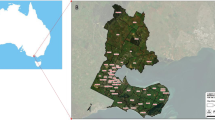Abstract
The article discusses methodological approaches to the assessment of the spatial configuration and structure of green spaces and fragments of the natural landscape (for Malaga, Spain). Modern modeling techniques using geographic information systems (GIS) are used to assess Malaga’s green infrastructure in terms of the configuration, fragmentation, and spatial structure of green spaces (with GuidosToolBox software). Morphological spatial pattern analysis (MSPA) focuses on the geometry and connectivity of components based on a raster image of the study area, can automatically identify ecological corridors of different sizes, and can further rank them within the network, thereby making it possible to assess the connectivity of the natural framework of the city. With MSPA, it is possible to identify the configuration and structure of green spaces, the main basic reserves (cores) and islands of green infrastructure, and the ecological corridors and to assess the connectivity and fragmentation of green spaces, which is critical for the determination of the unity of the ecological framework of the parameters. The scientific novelty of the research consists of the developed methodological approaches for the determination of high-priority areas of the green infrastructure network, which are simultaneously important for both the conservation of biodiversity and for the development of the recreational and aesthetic qualities of green spaces.





Similar content being viewed by others
REFERENCES
Agenda Urbana Málaga, Indicadores de Sostenibilidad, Territorio y configuración de la ciudad, 2016. http://static.omau-malaga.com/omau/subidas/archivos/ 6/2/arc_7726_v2.pdf. Accessed April 14, 2020.
Batty, M. and Rana, S., Reformulating Space Syntax: The Automatic Definition and Generation of Axial Lines and Axial Maps: CASA Working Paper Series No. 58, London: Centre Adv. Spatial Anal., 2002.
Flynn, K.M. and Traver, R.G., Green infrastructure life cycle assessment: a bio-infiltration case study, Ecol. Eng., 2013, vol. 55, pp. 9–22.
Golubchikov, S.N., Minin, A.A., and Gutnikov, V.A., Optimization of urban environment, in Ekologiya krupnogo goroda (na primere Moskvy): Uchebnoe posobie (Ecology of a Large City by Example of Moscow City): Manual), Moscow: Pas’va, 2001.
Hansen, R. and Pauleit, S., From multifunctionality to multiple ecosystem services? A conceptual framework for multifunctionality in green infrastructure planning for urban areas, Ambio, 2014, vol. 43, no. 4, pp. 516–529.
Liquete, C., Kleeschulte, S., Dige, G., Maes, J., Grizzetti, B., Olah, B., and Zulian, G., Mapping green infrastructure based on ecosystem services and ecological networks: a Pan-European case study, Environ. Sci. Policy, 2015, vol. 54, pp. 268–280.
McNicoll, G., United Nations Department of Economic and Social Affairs, Population Division: Population, resources, environment and development database, Version 4.0, Popul. Dev. Rev., 2005, vol. 32, no. 4, pp. 183–185.
Riitters, K.H., Coulston, J.W., and Wickham, J.D., Fragmentation of forest communities in the eastern United States, Forest Ecol. Manage., 2012, vol. 263, pp. 85–93.
Vogt, P., Quantifying landscape fragmentation, Proc. XVII Simpósio Brasileiro de Sensoriamento Remoto (SBSR), João Pessoa, 2015, pp. 1239–1246.
Vogt, P. and Riitters, K., GuidosToolbox: universal digital image object analysis, Eur. J. Remote Sens., 2017, vol. 50, pp. 352–361.
Wei, J., Qian, J., Tao, Y., Hu, F., and Ou, W., Evaluating spatial priority of urban green infrastructure for urban sustainability in areas of rapid urbanization: a case study of Pukou in China, Sustainability, 2018, vol. 10, p. 327.
Author information
Authors and Affiliations
Corresponding author
Ethics declarations
Conflict of interests. The author declares that they have no conflicts of interest.
Statement on the welfare of humans or animals. This article does not contain any studies involving animals performed by any of the authors.
Rights and permissions
About this article
Cite this article
Mironova, E.E. GIS Modeling of Green Infrastructure of Mediterranean Cities for the Management of Urbanized Ecosystems. Arid Ecosyst 11, 149–155 (2021). https://doi.org/10.1134/S2079096121020116
Received:
Revised:
Accepted:
Published:
Issue Date:
DOI: https://doi.org/10.1134/S2079096121020116




